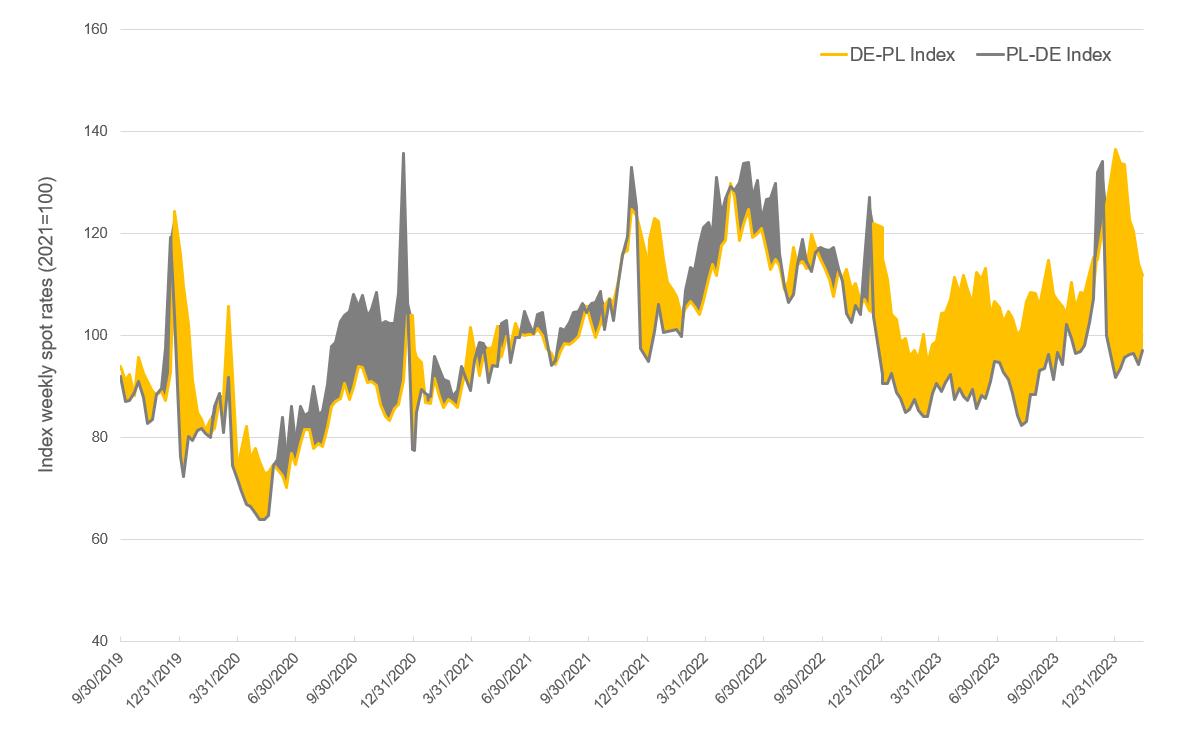Transportation between Poland and Germany is characterized by imbalances. These imbalances are not only based on the distribution of transports in between these two countries, but are also impacted by eastern European trucks and drivers returning to their home countries for vacations and rest periods. As a result, there is a structural overcapacity on east-bound flows and consequently low rate level, especially on the spot market. The following chart shows the development and their relative difference of spot rates between both directions.
Index based development of spot rates between Germany and Poland
Source: Transporeon Market Insights, own illustration
The chart does not display the absolute height of individual spot rates; it focuses on their weekly development.. Currently, spot rates from Germany to Poland are around 744 Euros, while rates from Poland to Germany range around 975 Euros for a 750 km transport.
Here's an interesting fact that can be monitored: towards the end of the year, usually spot rates from Poland to Germany increase around two weeks earlier. Given the description on the imbalances a logical market behavior, which Shippers and Carriers could and should implement in their awarding and assignment strategies during these weeks.
A second, and more prominent observation on this chart is a significant decoupling of developments in 2023. While history has shown occasional periods of decoupling, the extent of it in the past 4 years is noteworthy.
This suggests the need for a structural change in the market to enable such a contrasting development. This significant change could only occur if there was a considerable shift in the numbers of transports in one direction and/or a change in the number of trucks returning. So the question arises: what happened in 2022 to influence the eastbound flows, resulting in a new level of spot rates from Germany to Poland in 2023?
One possible explanation is the likely impact of the enforcement of the second amendment of the mobility package. This impact could potentially lead to a reduction in the portion of the fleet of eastern European carriers providing services in western European countries. This effect could indeed fully account for the changes on spot rates in between Germany and Poland. For more information on the impacts of the mobility package please refer to our corresponding article and analyses:
Challenging times ahead?
The world of transportation changed in August 2020 and February 2022. The reason for that is the implementation of the EU’s mobility packages 1 & 2, two sets of rules preparing the ground for changes in the road transport sector. Major impact on the structure of the transportation market was expected, especially with regards to available transport capac…






